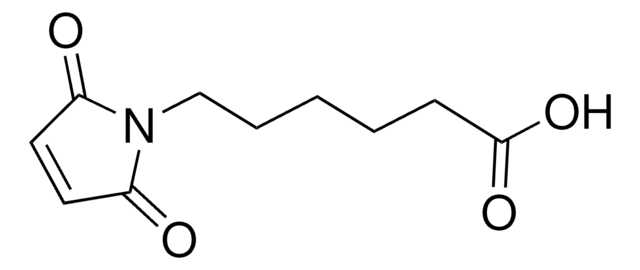Wichtige Dokumente
870016P
Avanti
23:2 Diyne PC [DC(8,9)PC]
Avanti Research™ - A Croda Brand 870016P, powder
Synonym(e):
1,2-bis(10,12-tricosadiynoyl)-sn-glycero-3-phosphocholine
About This Item
Empfohlene Produkte
Form
powder
Verpackung
pkg of 1 × 1 g (870016P-1g)
pkg of 1 × 200 mg (870016P-200mg)
pkg of 1 × 25 mg (870016P-25mg)
pkg of 1 × 500 mg (870016P-500mg)
Hersteller/Markenname
Avanti Research™ - A Croda Brand 870016P
Versandbedingung
dry ice
Lagertemp.
−20°C
SMILES String
[O-]P(OCC[N+](C)(C)C)(OC[C@]([H])(OC(CCCCCCCCC#CC#CCCCCCCCCCC)=O)COC(CCCCCCCCC#CC#CCCCCCCCCCC)=O)=O
InChI
1S/C54H92NO8P/c1-6-8-10-12-14-16-18-20-22-24-26-28-30-32-34-36-38-40-42-44-46-53(56)60-50-52(51-62-64(58,59)61-49-48-55(3,4)5)63-54(57)47-45-43-41-39-37-35-33-31-29-27-25-23-21-19-17-15-13-11-9-7-2/h52H,6-23,32-51H2,1-5H3/t52-/m1/s1
InChIKey
IDBJTPGHAMAEMV-OIVUAWODSA-N
Verwandte Kategorien
Allgemeine Beschreibung
Anwendung
Verpackung
Rechtliche Hinweise
Lagerklassenschlüssel
11 - Combustible Solids
Hier finden Sie alle aktuellen Versionen:
Analysenzertifikate (COA)
It looks like we've run into a problem, but you can still download Certificates of Analysis from our Dokumente section.
Wenn Sie Hilfe benötigen, wenden Sie sich bitte an Kundensupport
Besitzen Sie dieses Produkt bereits?
In der Dokumentenbibliothek finden Sie die Dokumentation zu den Produkten, die Sie kürzlich erworben haben.
Unser Team von Wissenschaftlern verfügt über Erfahrung in allen Forschungsbereichen einschließlich Life Science, Materialwissenschaften, chemischer Synthese, Chromatographie, Analytik und vielen mehr..
Setzen Sie sich mit dem technischen Dienst in Verbindung.
![23:2 Diyne PE [DC(8,9)PE] 1,2-bis(10,12-tricosadiynoyl)-sn-glycero-3-phosphoethanolamine, powder](/deepweb/assets/sigmaaldrich/product/images/228/422/4e95f75c-14fa-4117-a383-2eff73fa927f/640/4e95f75c-14fa-4117-a383-2eff73fa927f.jpg)







